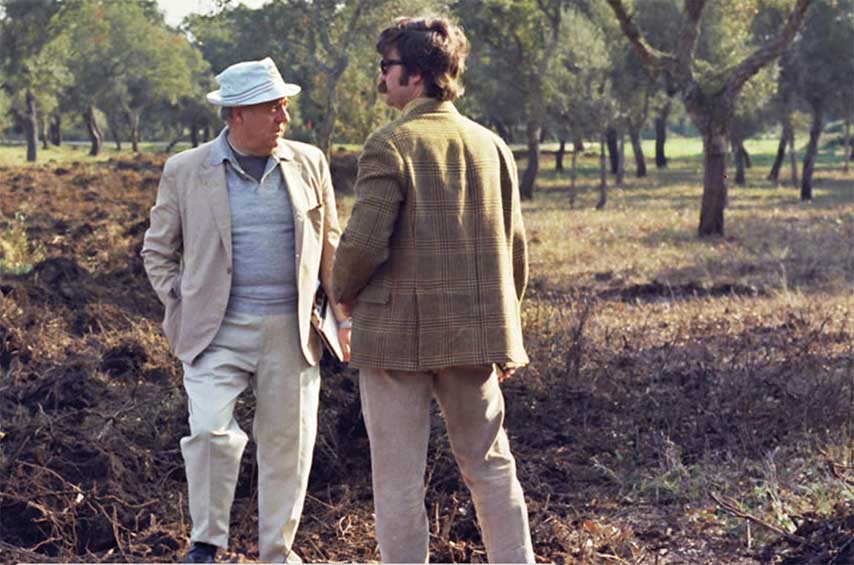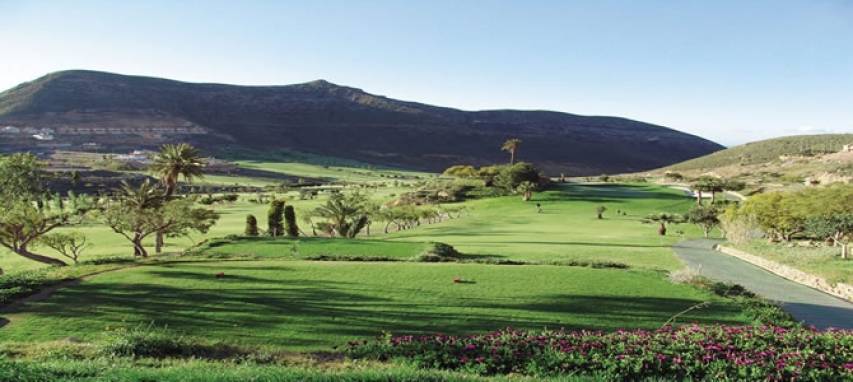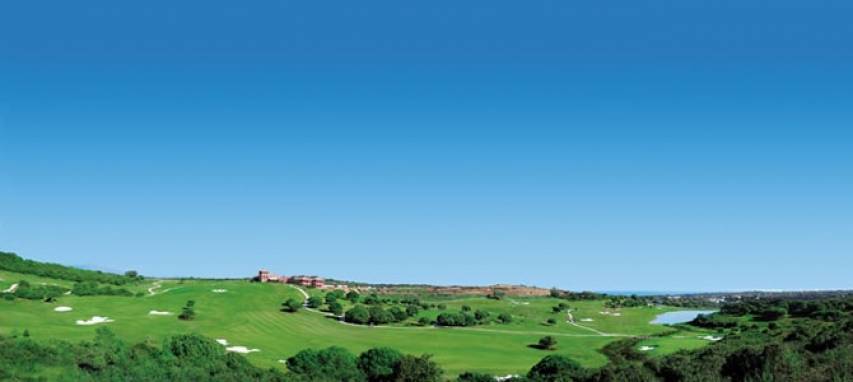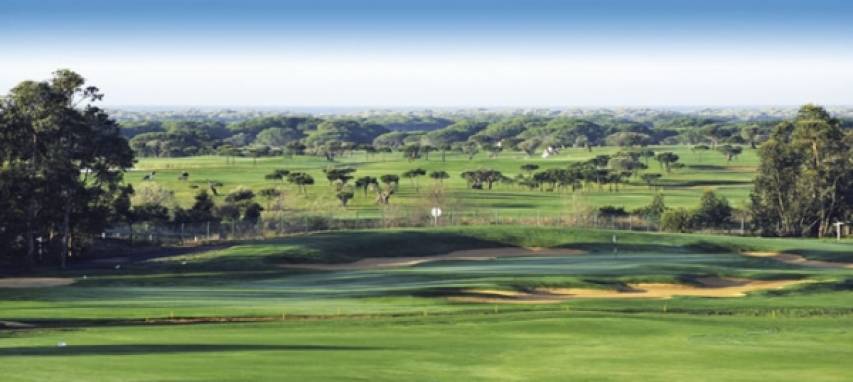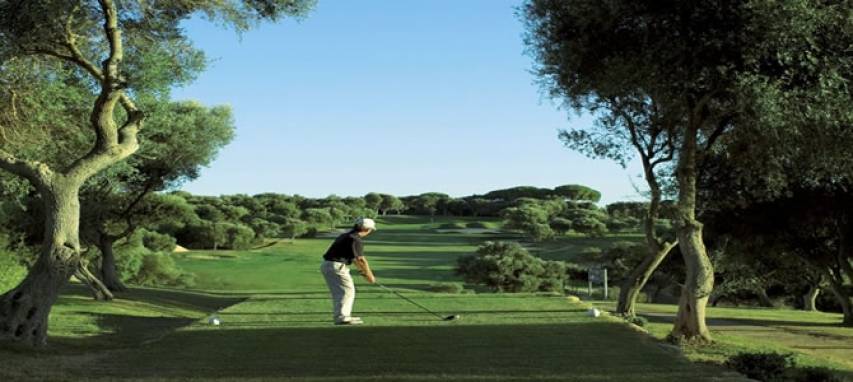He doesn’t keep count of the number of courses he has designed because what interests him most, he stresses, is quality not quantity. On the Costa del Sol, where he has lived for the past 45 years, he is – together with Robert Trent Jones – the most prolific designer, with seven courses bearing his signature: Finca Cortesín, Santana, La Reserva de Sotogrande, La Cala (three 18-hole layouts) and Valle Romano. Cabell B. Robinson is one of Europe’s most renowned golf designers, having been sent to the Costa del Sol four decades ago by his teacher and mentor, the legendary Robert Trent Jones. “I think it was because he didn’t like my moustache.”
Born in 1941, the American received a bachelor of arts in history from Princeton University, went on to study at Harvard’s Graduate School of Design, later completed his bachelor of landscape architecture at the University of California-Berkeley and, after finishing his studies, began working for the great golf course designer Robert Trent Jones – he had become close friends with his younger son at Harvard.
In 1970, Cabell moved to Europe to run Jones’ office on the Old Continent, and he set up home on the Costa del Sol, where he has lived ever since. The only American Society of Golf Course Architects member in Europe, Cabell remained with Jones for 20 years before, in 1987, establishing his own company. Before moving across to this side of the Atlantic, Cabell had designed two courses in the United States and one in Puerto Rico. Subsequently, he was involved with the design and construction of every Jones course in Europe from 1971 to 1987, after opening the European office.
On becoming his own boss, in Spain Cabell designed La Cala de Mijas, La Reserva de Sotogrande, Santana Golf & Country Club, Valle Romano, Finca Cortesín, Las Colinas and Castillo de la Mota. He also created courses in Portugal, Switzerland, Italy, Cyprus and Morocco – including Praia del Rey (Portugal), Golf Les Dunes (Morocco) and Evian Resort Golf Course (France), venue for the Evian Championship (one of the five majors in women’s golf).
Unhurried and deliberate in his speech, with an amiable countenance highlighted by the distinctive moustache that has remained with him all his life, and wearing an eye-catching, ethnic-style, silver-plated watch on his right forearm, Cabell doesn’t mince his words, giving a stern ticking off – albeit in a polite manner – to those designers who only think about money and not about doing a good job. “I’ve rejected commissions because the terrain wasn’t ideal, but not everyone does that,” he says by way of introduction, before relating the story of one project he declined on the Costa del Sol, which was subsequently completed by another designer. “After having said that I wouldn’t design a course there, I learned that my close friend Roger Rulewich, who was with Robert Trent Jones for 35 years, had also rejected their offer. Like me, he didn’t realise I had said no as well.”
Robinson’s “bêtes noires” are top golfers who become designers. He considers all of them, in a certain way, to be interlopers in the world of design, due to their lack of a profound knowledge of the subject matter apart from their experience as players, although he does separate them into two categories: those who surround themselves with good design professionals; and others who allow themselves to be advised by amateurs in design matters. “None of them actually do the routing work,” he notes.
“I admire Jack Nicklaus and he’s very well prepared,” he says, “but I doubt very much that if you gave him a piece of blank paper he would be able, without a lay of the land in front of him, to divide the plot and create a design. I’m sure he would do it better than others (famous players) – I don’t know – but basically other pros don’t have the faintest idea.”
Returning to his own teacher, he continues, “When Jones began in the 1930s, he had to do everything. These days no one does everything: I, for example, don’t design the irrigation, now that it is so technical, and it’s contracted out to an independent specialist. I don’t believe that golf professionals are properly trained to design golf courses. However, they have the name, the fame, and that competition is very tough for architects, especially in Dubai and places like that where they always seek out a top player. When Nicklaus began designing more than 40 years ago, having a Nicklaus design was something special, exceptional, but these days this exclusivity doesn’t exist because he’s designed more than 300.”
So how does a top designer like Robinson undertake a new project? “The first thing you have to do is check out the terrain, the topography, to see if you can or cannot build a golf course there. I can then visualise where, initially, the holes will be – not in detail but in general. Nine holes here and the other nine over there – or something like that. The rest is easier. You have to draw up the plans, but most of all you need to be familiar with the terrain and be out on the course supervising the construction.”
And he recalls his mentor once again. “One of the lessons I learned from Jones is that the routing, the course layout, is the most important thing, because it’s like what a tailor does – once the material is cut you can’t change much. For me, the routing is the key. It’s very easy to find a place for an amazing green but, as soon as you decide that here I’m going to do a par-3 or a par-4, that determines the rest of the routing, how the other holes will be. There are exceptions, for example at Cypress Point, which has two consecutive par-3s, the 15th and 16th, on the most fantastic piece of land in the world. And the architect Alister MacKenzie did a very good job there because they are pretty well the most famous holes in the world. However, it is easy to fall into the trap of creating a beautiful hole that can later impair the rest of the routing.”
- What is your view about Costa del Sol courses in general?
- We have six or seven courses that are among the best in Europe, and furthermore some – such as Valderrama and Finca Cortesín – have a very high level of maintenance. That requires a lot of money, and most courses in Europe can’t reach that level. Another top course is Las Brisas, where Kyle Phillips has done a great renovation job. The club has made a considerable investment but the result is excellent; I’m really impressed.
As for the new star designers in the media spotlight, Cabell says some are “perhaps too interested in the course’s visual impact, in the aesthetics, in creating something that looks spectacular.” He brings Tom Doak into this particular fray. “He’s very talented. I’ve visited several of his courses in the United States but I don’t like them because often they ‘bury dinosaurs’ on the greens – I mean, they have too many slopes and undulations, and the ball can roll quite a lot even though you’ve hit a good shot. So the greens are unfair.”
At the conclusion of the interview, La Cala Resort’s general manager, Ken Flockhart, appears on the clubhouse terrace, and Robinson starts talking to him about the time that has passed since he designed the complex’s first course. He does so with no sense of nostalgia, smiling, speaking in measured tones… That’s Cabell for you – calm and serene.



